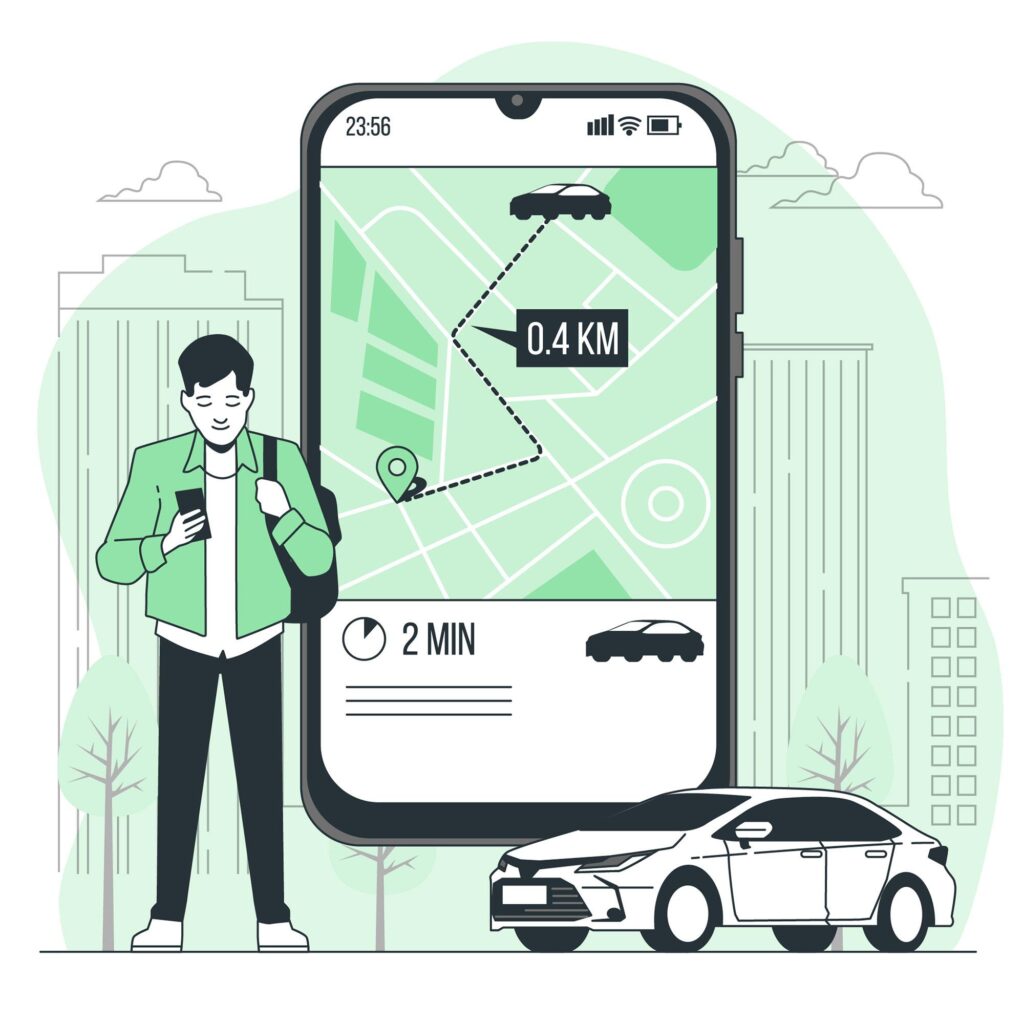Ola, India’s top ride-hailing platform, surprised many by abandoning Google Maps in favor of its custom-built navigation system, Open Maps, which incorporates Open Street maps. This move reflects Ola’s commitment to developing homegrown technology solutions, a mission championed by many within the company.
Ola Map’s Quest for Self-Reliance and Cost Savings:
Ola’s decision to develop its own mapping system is driven by several factors. Primarily, it aims to reduce its reliance on major Western tech companies, thereby gaining greater control over operations, associated costs, data security, and the overall customer experience. Creating in-house maps allows Ola to customize navigation specifically for its drivers and passengers, optimizing routes and ensuring accurate arrival times. This strategy is consistent with Ola’s earlier transition from Microsoft Azure to its own AI firm, Krutrim, underscoring a commitment to self-reliance.
From a financial perspective, this move is prudent. According to CEO Bhavish Aggarwal, Ola previously spent a substantial ₹100 crore annually on Google Maps services. This cost-zero approach results in voluminous savings, allowing the company to invest those resources in other avenues of the business.
A Setback for Google and Microsoft but possibly not a Critical Hit
Despite Google Maps being pre-installed on Android smartphones and maintaining its status as one of the most installed navigation apps in the US, Ola Maps’ entry into the market demonstrates that even industry giants are susceptible to competition. While Ola’s move could potentially affect Google’s reputation, it will take significant effort for Ola Maps to challenge Google’s established position in the navigation market, given extensive financial resources and a widely adopted system.
While this isn’t the first time a brand has faced off against a giant, the true impact of Ola’s migration remains to be seen. Prior to parting ways in May 2024, In 2017, Ola collaborated with Microsoft Azure to develop a connected vehicle platform for global car manufacturers, leveraging Azure as their cloud services provider. Microsoft’s revenue from its India operations saw a significant 39% Y.O.Y increase in FY23, reaching Rs 19,230 crore. Only time will reveal the full implications of Ola’s strategic move on these two tech giants.

The “Indian Alternatives” Narrative: Patriotism and Smart Business
Ola’s CEO has been a vocal advocate for developing homegrown solutions to replace cost-heavy Western Titans. This resonates with a growing nationalistic sentiment and the desire for a self-reliant India, but it’s also a smart strategic business move. This narrative, however, isn’t solely about patriotism. It’s also a wise business strategy. This is too early to comment on Ola Maps, but certainly the move may ignite Indian startups and organizations to think within.
By building solutions tailored to the Indian market, Ola, being a home-evolved brand can address unique challenges and opportunities that global companies may overlook. This includes confusing street names, unmapped or poorly mapped streets, complex road networks, closure of street information, potholes, road status, local language support, and better pricing.
Following a similar approach to the one where Ola provided a full year of free cloud usage on its platform (with the condition that users do not return to Azure after the switch), Ola is now offering a year of free access to Ola Maps on the company’s Krutrim Cloud, along with over Rs.100 crore in free credits. Ola’s CEO has confirmed that the first year will be free, and subsequently, the cost will be significantly lower than existing products—specifically, 70% cheaper in INR rather than dollars.
Despite receiving mixed reviews during its initial week of launch, the considerable effort invested in this product remains evident. Some users encountered issues such as incorrect locations and map failures during heavy rainfall. Nonetheless, this may just be the beginning, especially with notable figures like ISRO Chief S. Somanath asserting that their “Bhuvan” mapping system is 10 times superior to Google Maps. Reports indicate that Bhuvan provides over 250,000 high-resolution Panchayat datasets across India, facilitating precise governance interventions. Another tool, the National Database for Emergency Management (NDEM) under Bhuvan, aids in risk assessment and mitigation during emergencies
The Road Ahead: Challenges and Opportunities:
Ola’s decision to develop its own mapping system has challenges associated with it. Despite these hurdles, the company has made continuous investments and improvements in its maps. Reports indicate that Ola has actively contributed to nearly 5.43 million edits enhancing OpenStreetMap (OSM) data by leveraging tools like Open Source Routing Machine (OSRM), Maplibre, and Pelias. However, this transition is not without risks. Google and Apple already dominate the mapping landscape with deep pockets. For instance, Google doesn’t need to aggressively acquire new customers due to its widespread adoption.
Additionally, it collaborates with Indian local authorities and public transportation systems to provide real-time updates on buses and rails, further enhancing its service. Partnerships with organizations like ONDCs and Namma Yatris have been their initiatives to transform digital commerce in India. Ola’s focus should extend beyond accuracy and up-to-date maps for travel planning. India’s diversity demands locally tailored features, including multi-language support, relevant local data, and live feeds. Crucially, Ola must ensure that sensitive data remains within Indian borders
Final notes: The Map Wars
Every technological shift necessitates ‘change’, and Ola has shown that its ‘Indian alternative’ for mapping has the potential to surpass established players. While still evolving, this initiative aims squarely at disrupting the status quo and catalyzing innovation. Ola’s objective is to develop a robust cartographic infrastructure that can facilitate future advancements in mobility, including autonomous vehicles and drones. This journey represents a comprehensive strategy aligned with broader goals in transportation innovation. Map wars are on and exciting developments await. To read more on Ola Map, please visit the official page. You can read some more articles here.

